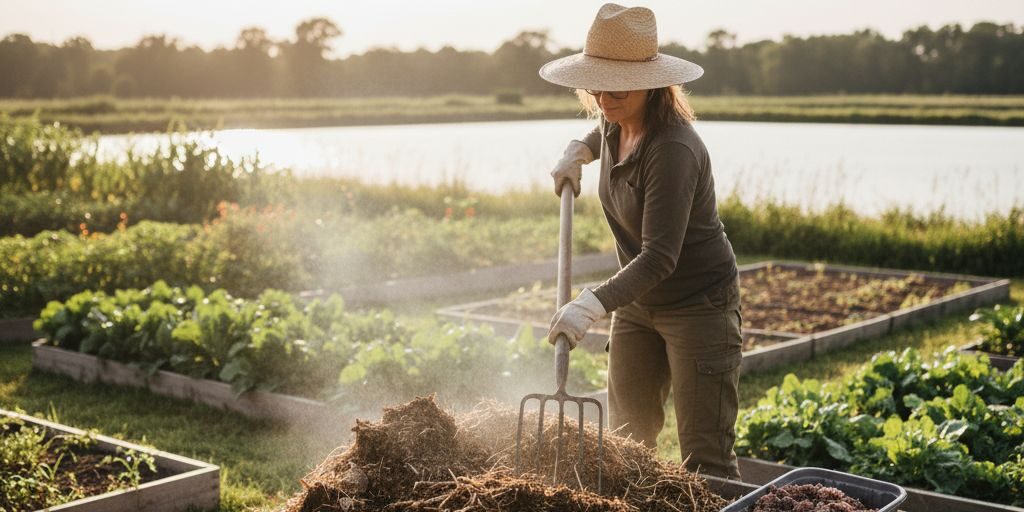- Software Gestor para Aquicultura
- (85) 2139-6730
- contato@despesca.com.br
Alternative Proteins: The Sustainable Future of Aquaculture Feed

Efficient Cash Flow: 10 Essential Tips for Your Farm
29/09/2025
Cost Per Pound of Fish: The Question Your Paper Notes Can’t Answer
01/10/2025The pursuit of greater efficiency and sustainability in modern aquaculture inevitably involves nutrition. For decades, fishmeal and soy meal were the cornerstones of feed formulations for fish and shrimp. However, increasing demand, price volatility, and the environmental impact of these inputs are pressing producers to seek new solutions. In this scenario, alternative proteins emerge not merely as an option, but as an essential path to profitability and the longevity of aquaculture activities.
Transitioning to new nutrient sources is, therefore, a strategic decision that directly impacts the financial and environmental health of farms. Incorporating these novel ingredients requires rigorous control and a deep understanding of their effects on the animals’ zootechnical performance.
The Exhaustion of the Traditional Model
The reliance on fishmeal, produced from wild-caught fish, places significant pressure on marine ecosystems. Furthermore, its limited supply and the increase in global demand lead to escalating prices that burden production costs, a major bottleneck for many producers. Similarly, the expansion of soy cultivation competes for arable land and is subject to climatic and market variations, directly affecting the predictability of feed costs, which can represent more than 60% of a production cycle’s total cost.
This situation makes the search for alternatives an urgent necessity, driving research and the development of innovative ingredients capable of providing the appropriate nutritional profile with a lower environmental impact and greater economic stability.
Main Sources of Alternative Proteins in Aquaculture
Innovation in aquafeed nutrition has presented several promising protein sources. Each possesses distinct characteristics that can suit different species and cultivation systems.
- Insect Meal: One of the most promising alternatives, especially that produced from black soldier fly larvae (Hermetia illucens). This ingredient boasts a crude protein content that can range from 40% to 60%, with a highly digestible essential amino acid profile for fish and shrimp. Additionally, its cultivation can occur in circular economy systems, using agro-industrial by-products as substrate, which reduces waste and environmental impact.
- Single-Cell Proteins (SCPs): These encompass yeasts, bacteria, and microalgae cultivated in controlled environments. SCPs stand out for their high protein concentration (potentially exceeding 70%) and rapid production rate, independent of arable land or specific climatic conditions. Sources like Saccharomyces cerevisiae yeast are already used as functional additives, but their potential as a primary protein source is increasingly explored.
- Microalgae (Spirulina and Chlorella): Besides their considerable protein content (up to 65%), microalgae are rich in vitamins, minerals, essential fatty acids (such as omega-3), and natural pigments, like astaxanthin, which enhances animal coloration. Their use in the diet, even in small quantities, can strengthen the immune system and improve the overall health of the stock.
- Agribusiness By-products: The processing of grains and animal products generates nutrient-rich co-products that can be incorporated into feed. Examples include corn gluten meal, rice protein concentrates, and high-quality poultry offal meal. Utilizing these materials is a low-cost strategy aligned with sustainability principles.
Challenges and the Importance of Precise Management
Adopting alternative proteins, while promising, requires a careful transition. It is crucial to evaluate the digestibility, palatability, and amino acid balance of each new ingredient to ensure that the animals’ nutritional needs are fully met. Furthermore, economic viability depends on the production scale and logistical optimization of these new inputs.
In this context, data management becomes an indispensable tool. To validate the effectiveness of a feed with alternative proteins, producers need to precisely monitor key performance indicators. How is the new diet impacting the feed conversion ratio (FCR)? What is its effect on daily weight gain and survival? And, more importantly, how does this reflect on the final production cost?
The Future is Nutritious and Intelligent
Alternative proteins represent a natural and necessary evolution for aquaculture. They are the key to decoupling the sector’s growth from pressure on finite resources, paving the way for more resilient, sustainable, and profitable production. However, ingredient technology must go hand in hand with management technology. The future of aquaculture feeding lies not only in new raw materials but in the producer’s ability to intelligently and strategically measure, analyze, and optimize their use.




